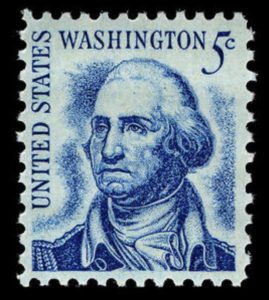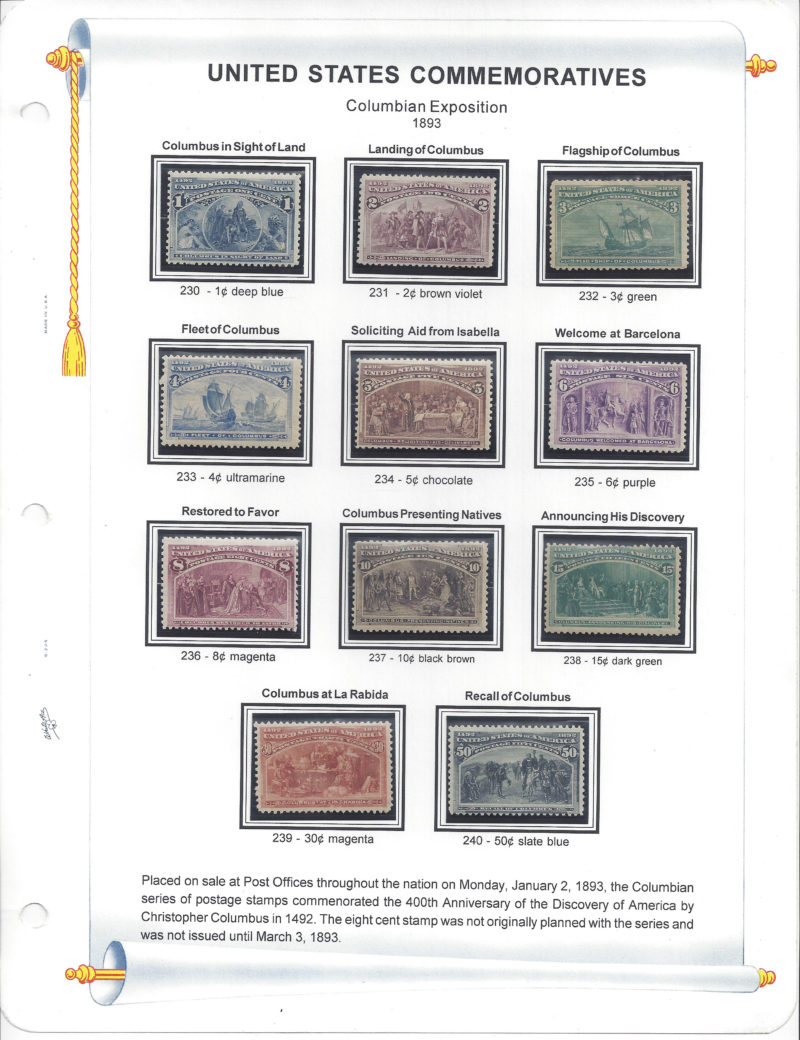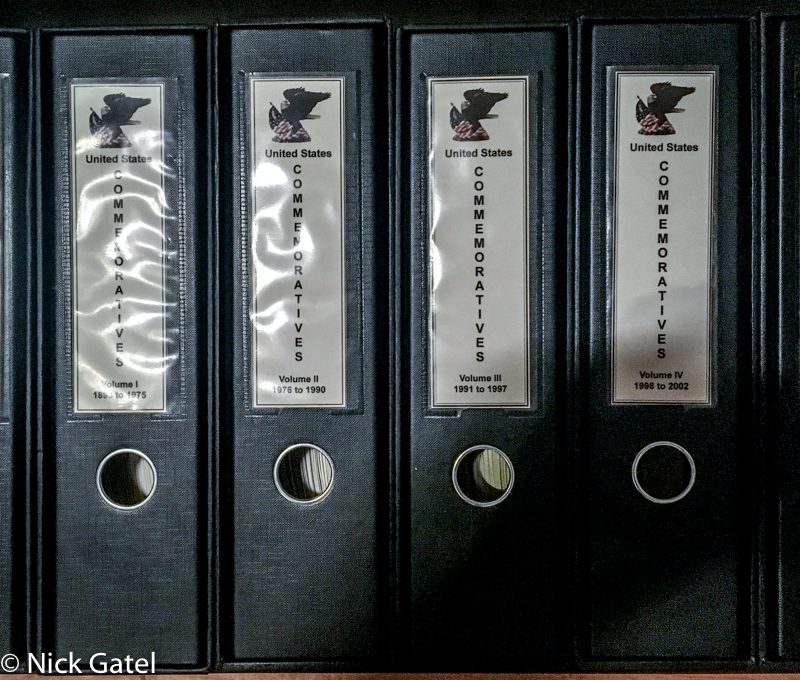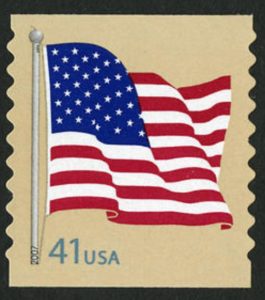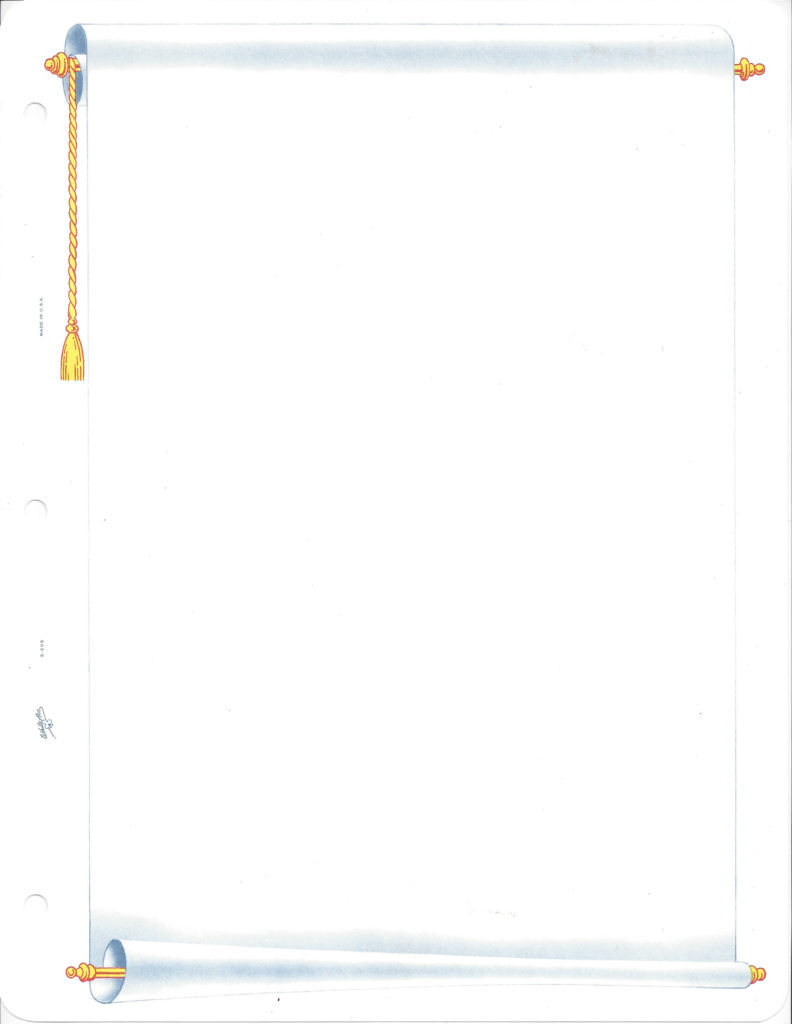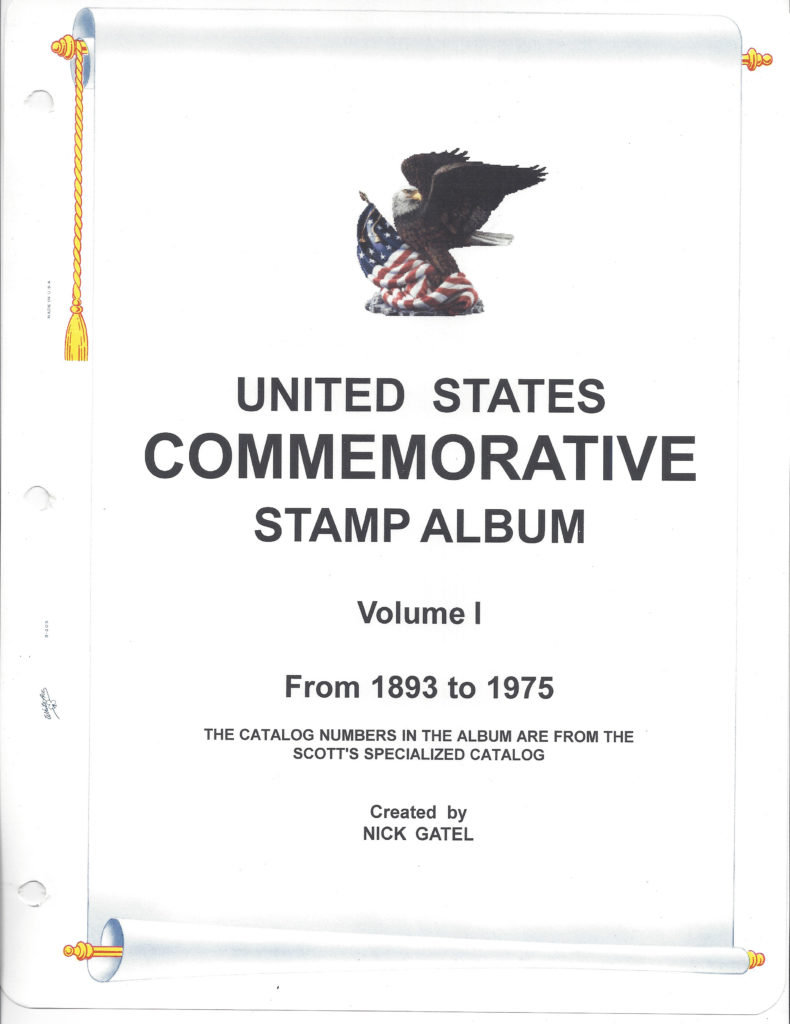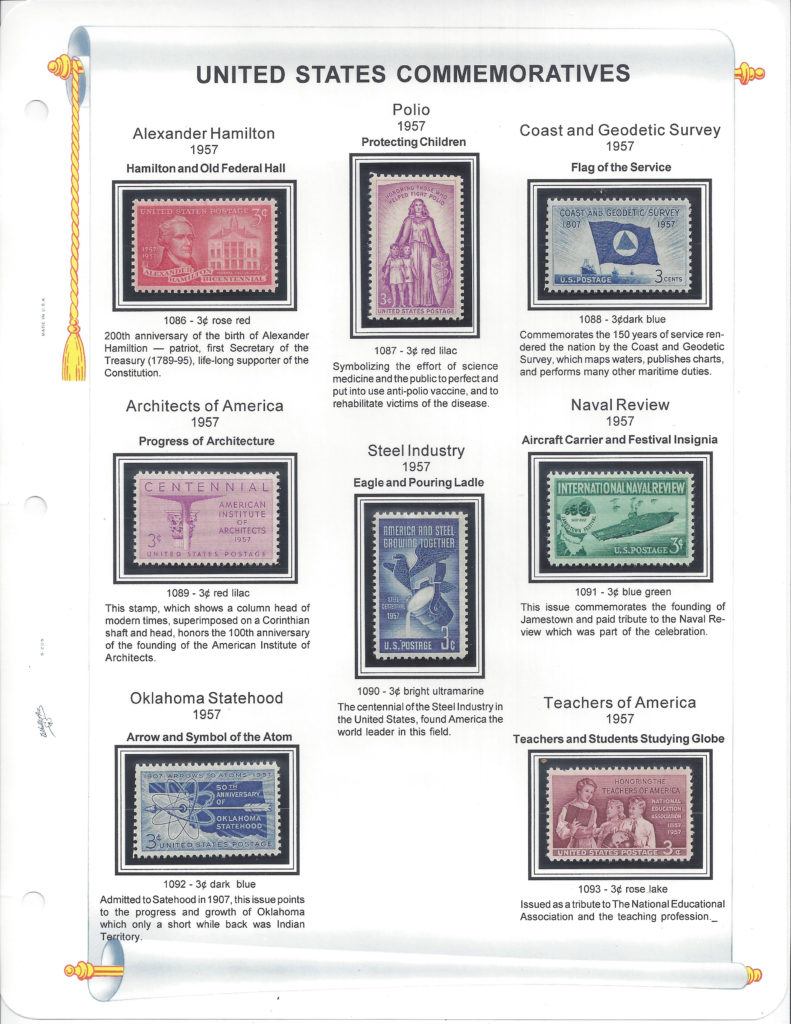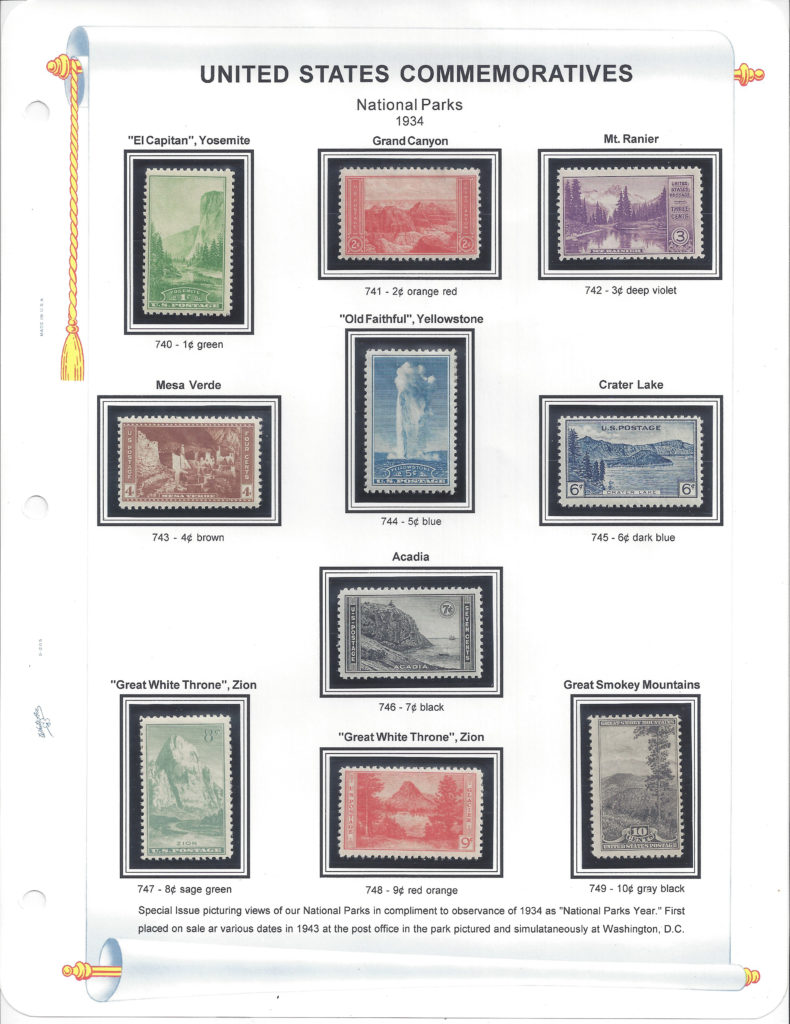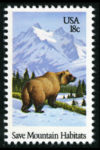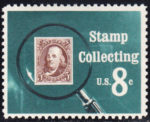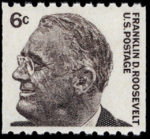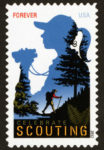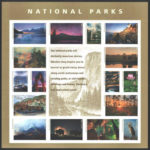I’ve been addicted to philately for nearly 60 years. I do it for the fun. It gives me pleasure. I spend money on it for only my personal benefit.
So what is philately?
It’s the study of postage stamps and postal history. It can also be the collection of postage stamps. But collecting stamps isn’t necessarily philalety. The philalety is the education and knowledge part. I collect and study stamps. I am a philaletist.
I was around 10 years old when I started collecting stamps and have never stopped. Oh, there have been periods of time when my albums just sat on a book shelf; but the collection was never forgotten or abandoned.
Over the years I’ve moved away from collecting world-wide stamps and have beecome laser-focused on just U.S. stamps. Collecting world-wide stamps has become too immense of a project. Heck even U.S. stamps have gotten to be a big adventure. The first U.S. postage stamps went on sale in 1847. From 1847 until around 1960, when I started collecting, the Post Office had released about 1,200 stamps in 113 years. Today, the number of postage stamps issued by the U.S. since 1847 is close to 6,000. That’s a lot of collecting!
When I was a kid stamp collecting was a popular hobby. Almost every city had several stamp stores that served collectors with stamps and supplies. You could even by stamp albums and stamps at drug stores and department stores. Stamp stores are just about extinct today and there are only a handful of companies that produce albums… and most albums are just pages with little boxes for each stamp. So a little over 10 years ago I started making my own albums. Not only did it allow me to customize each page, but I was able to write a little story on the background of each stamp. So for each stamp in my collection, I research the subject matter whether it is a famous person, place, animal, event, or other object. This is part of the philately of collecting, because there is a story on how each stamp was conceived, designed and printed.
Commemorative Stamps versus Regular Stamps
Definitive Stamps
Regular-issue stamps, also called definitive stamps, are the everyday stamps that people and organizations use. They come in many denominations and are often sold for years by the Post Office. For example, this 5¢ Washington stamp was issued in 1966 and was sold by the Post Office until the late ‘70s.
Commemorative Stamps
These stamps are issued to honor an important person, event, place, object, or anniversary. They are printed in smaller quantities than regular issues, and are sold for a limited period of time; usually a few months. Unsold stamps are usually destroyed.
The first U.S. commemorative stamps were issued in honor of the 1893 World’s Columbian Exposition. Sixteen stamps were issued in this series and illustrated the various stages of Columbus’ voyages to the New World. Today these stamps are highly valued by collectors. Below are the first eleven stamps in mint condition (unused) from my collection.
Storing Stamps
One could just store stamps in a cardboard box or plastic bin. However, that isn’t collecting in my opinion; it’s storing a bunch of stamps. Most collectors mount stamps in albums so they can view and enjoy them.
These four volumes house my US Commemorative stamps from 1893-2002.My stamps are stored 3-ring binders I buy from a company named BinderTek. Each binder includes a protective slipcase. I use 3-inch binders for commemorative stamps and blocks of stamps that have the plate number. Plate blocks are stored in their own binders. Below is an example of a 1960 year of issue single stamp and a block of stamps with a plate number.
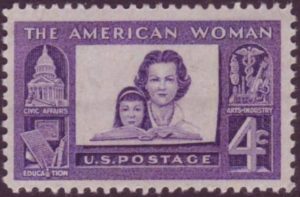
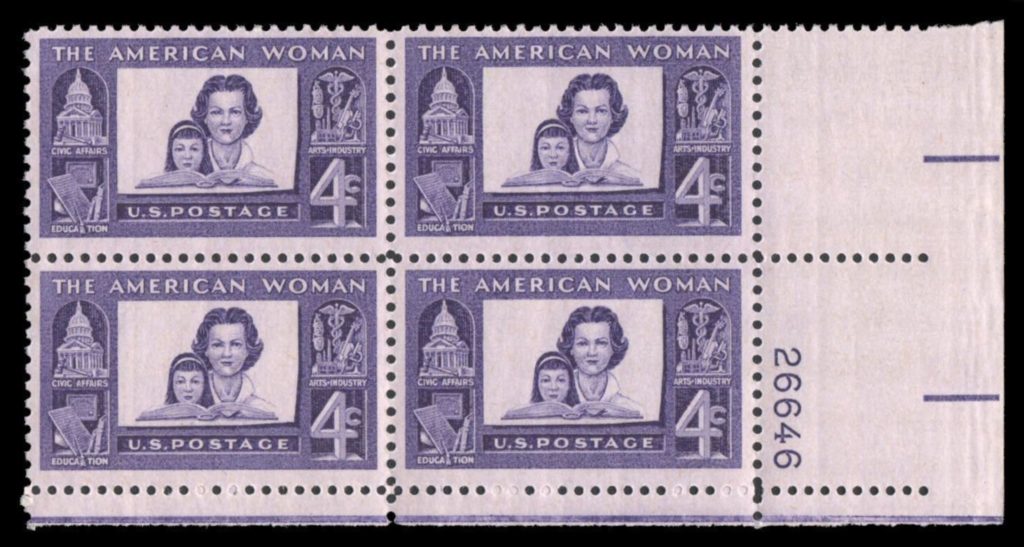
For regular issue stamps, like the one below, I use 2-inch binders.
Creating Album Pages
I buy specialty blank pages made by White Ace. The pages are heavy stock with “patriotic-looking” scroll for a background.
Then I lay out each page using Adobe InDesign software. Each volume (binder) gets its own cover page.
One could use Microsoft Word or some other world processor to create the album pages, but when I started making my own pages years ago I needed to learn how to use InDesign.
Once the page is designed, I print it on the White Ace paper. Each stamp is mounted using a protective mount made by Showgard.
This page of commemoratives are all single issue stamps. Below each stamp I have included a short summary of the subject.
Given that I enjoy history, spending time to research each stamp’s subject is fun for me. But you can probably appreciate the amount of time it takes to build each page. Since I retired I have spent quite a bit of time working on my collection. It’ll take me at least a year to finish everything for all the US stamps I currently own. Along with the stamp albums, I catalogue and inventory each stamp in a software program named, EzStamp. Below is the record for the 1893 50-cent Columbian Exposition stamp, which includes a picture of the the stamp.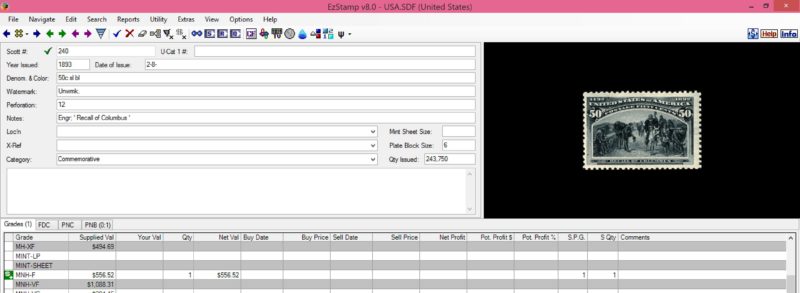
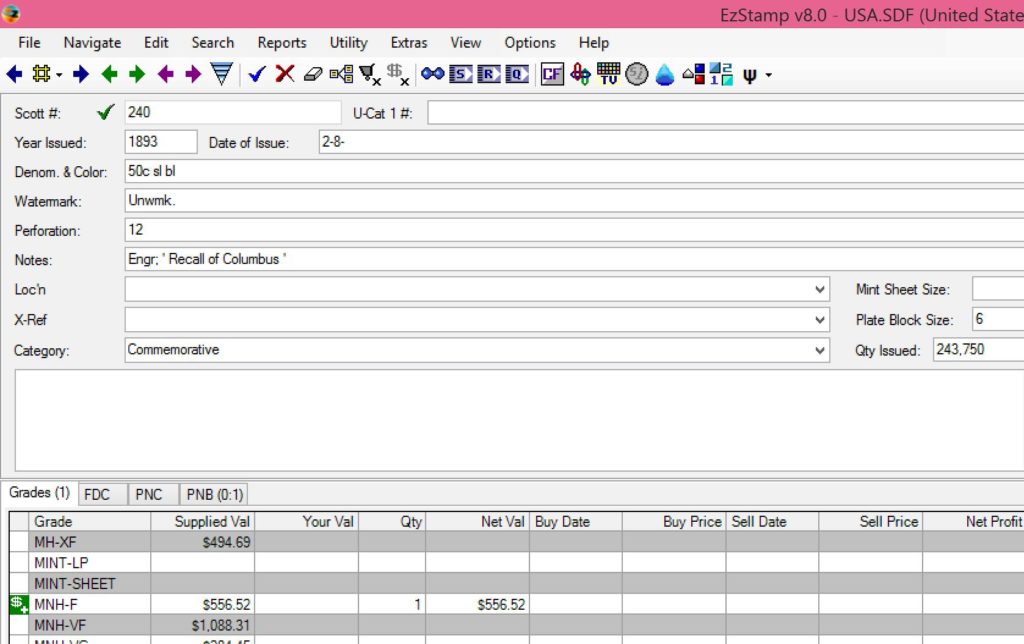
A closer view of the record shows the pertinent information:
- Scott catalog number is: 240
- Year issued: 1893
- Date issued: February, 8
- Denomination and Color: 50¢ slate blue
- Watermark: There is no watermark on the paper the stamp was printed on
- Perforation: 12 perforations (holes) per each 2 centimeters on all sides
- Notes: The stamp is printed with engraved plates, and the title of the stamp is “Recall of Columbus”
- Plate Block Size: 6 stamps along with the plate number on the sleeveage
- Category: Commemorative stamp
- Qty Issued: 243,740 (note – today most stamps are issued in quantities of around 30 million; regular issue stamps are 500-750 million; and the Disney stamps 200 million)
- Grade: MNH-F (M=Mint or Unused, NH=Never Hinged or Origina Gum Intact, F=Overall Condition is “Fine”)
- Catalog Value: $556.62 (note most stamps can be purchased for 50% of catalogue value on eBay; extremely rate stamps usually fetch catalog value). One thing about stamp values – stamps (with rate exceptions) are not investments – you will not make money buy collecting stamps and selling them at a later date. It is a hobby and hobbies cost money.
Stamps that are aligned with PopupBackpacker.com
Since this website is supposed to be about backpacking and camping, this 1934 commemorative issue of ten stamps recognizes our National Parks.
In the photo gallery below I included some of the stamps that are outdoor related or have something to do with stamp collecting, since that is the theme of this post. Click on any picture thumbnail for a full size view and its caption will include the year it was issued and a little bit of additional information.

